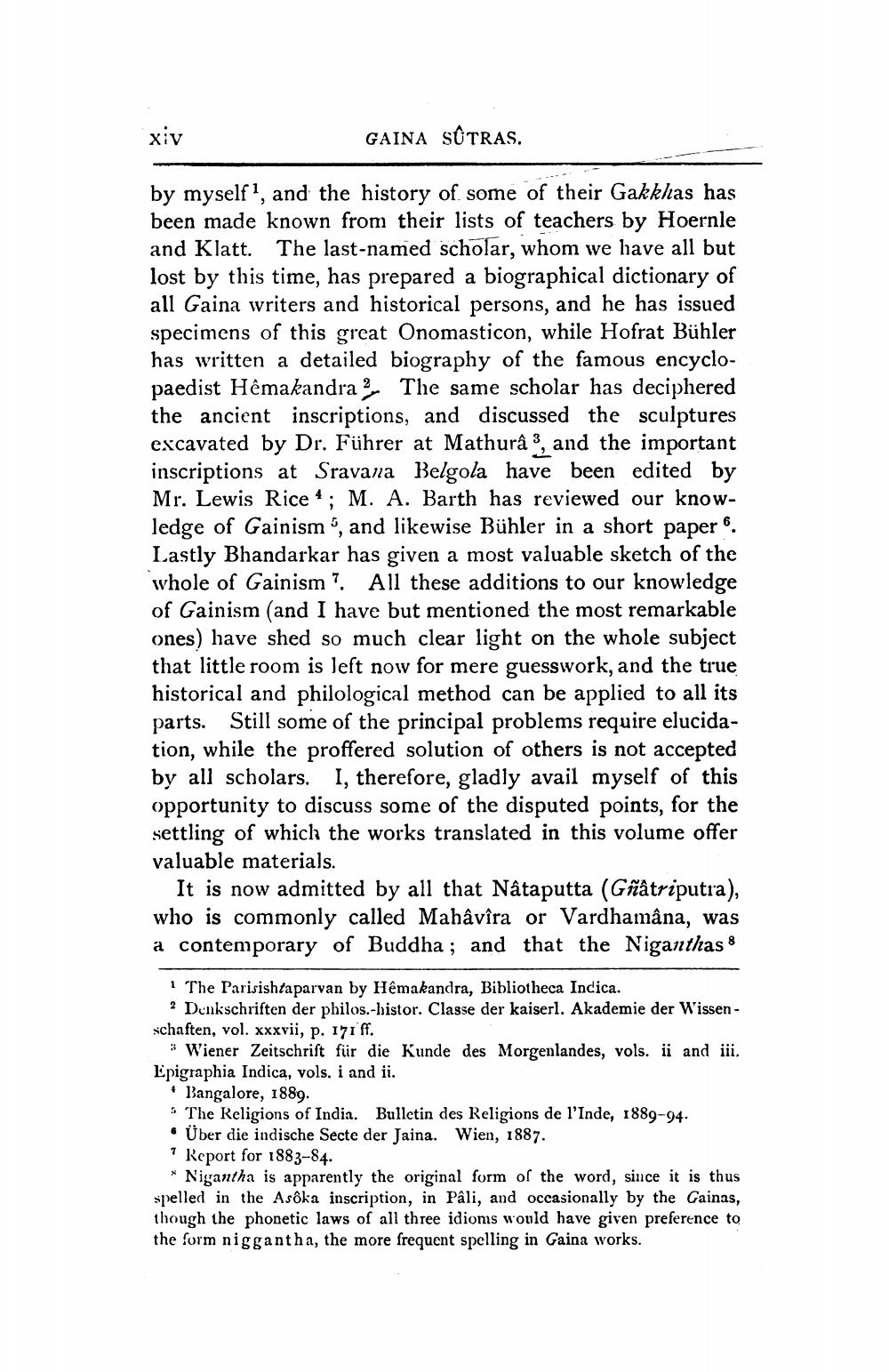________________
xiv
GAINA SÔTRAS.
by myself 1, and the history of some of their Gakkhas has been made known from their lists of teachers by Hoernle and Klatt. The last-named scholar, whom we have all but lost by this time, has prepared a biographical dictionary of all Gaina writers and historical persons, and he has issued specimens of this great Onomasticon, while Hofrat Bühler has written a detailed biography of the famous encyclopaedist Hemakandra. The same scholar has deciphered the ancient inscriptions, and discussed the sculptures excavated by Dr. Führer at Mathurâ 3, and the important inscriptions at Sravana Belgola have been edited by Mr. Lewis Rice 4 ; M. A. Barth has reviewed our knowledge of Gainism, and likewise Bühler in a short paper 6. Lastly Bhandarkar has given a most valuable sketch of the whole of Gainism? All these additions to our knowledge of Gainism (and I have but mentioned the most remarkable ones) have shed so much clear light on the whole subject that little room is left now for mere guesswork, and the true historical and philological method can be applied to all its parts. Still some of the principal problems require elucidation, while the proffered solution of others is not accepted by all scholars. I, therefore, gladly avail myself of this opportunity to discuss some of the disputed points, for the settling of which the works translated in this volume offer valuable materials.
It is now admitted by all that Nâtaputta (Gñâtriputra), who is commonly called Mahâvîra or Vardhamâna, was a contemporary of Buddha; and that the Niganthas 8
1 The Parisishta parvan by Hemakandra, Bibliotheca Indica.
? Denkschriften der philos.-histor. Classe der kaiserl. Akademie der Wissen - schaften, vol. xxxvii, p. 171 ff.
* Wiener Zeitschrift für die Kunde des Morgenlandes, vols. ii and iii. Epigraphia Indica, vols. i and ii.
* Bangalore, 1889. 5 The Religions of India. Bulletin des Religions de l'Inde, 1889-94. • Über die indische Secte der Jaina. Wien, 1887. * Report for 1883-84.
* Nigantha is apparently the original form of the word, since it is thus spelled in the Asôka inscription, in Pâli, and occasionally by the Gainas, though the phonetic laws of all three idioms would have given preference to the form niggantha, the more frequent spelling in Gaina works.




